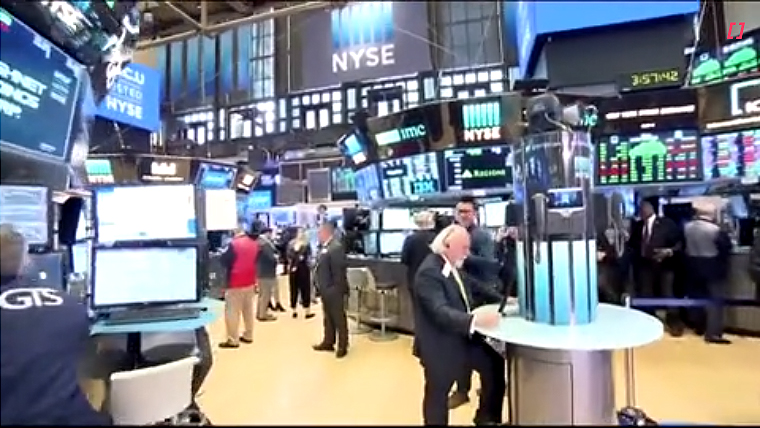
The market continues to trade cautiously, as it awaits Israel’s expected retaliation against Iran and key US employment data tonight. Oil prices are much higher on the fear on Iran’s oil facilities being a target. The combination of higher oil prices and a strong US ISM services survey has driven US Treasury yields higher. The USD is broadly stronger and GBP is the weakest of the majors, following dovish comments by BoE Governor Bailey.
Oil prices drifted higher as we await Israel’s next move in the Middle East. While Israel is yet to retaliate against Iran, it has continued with its ground assault in Southern Lebanon and airstrikes targeting Beirut. Oil prices got an added boost and are currently up over 4% after President’s Biden comments to reporters. When asked if he would support Israel striking Iran’s oil facilities, he responded “we’re in discussion of that…I think that would be a little…anyway”. Brent crude is currently trading above USD77 per barrel, its highest level in a month.
In economic news, the US ISM services index was much stronger than expected, rising 3.4pts to 54.9 its highest level since February 2023, while new orders rose 6.4pts to 59.4. The press release noted that the stronger growth indicated was generally supported by panelists’ comments. The survey challenged the soft-landing narrative for the US economy – rather than slowing to a sub-trend pace under the weight of restrictive monetary policy, at face value the data suggest the economy is still growing strongly. That said, the data have been choppy of late, aren’t particularly well correlated with real economy data and the employment index slipped back below 50, to 48.1, limiting the market reaction.
Initial jobless claims rose 6k last week to 225k, slightly ahead of consensus albeit consistent with no meaningful further deterioration in the labour market. The data will be difficult to interpret in the weeks ahead, with the strike by Boeing and dockworkers, usual seasonal adjustment problems at this time of year, and the impact of Hurricane Helene.
The backdrop of higher oil prices and the strong ISM services report have pushed up US Treasury yields across the curve in the order of 5-6bps. The 10-year rate trades at 3.83%. Fed easing priced into the curve was pared slightly, but the market remains torn between deciding whether the Fed moves at a 25 or 50bps pace over coming meetings. Some 34bps is priced over each of the November and December meetings.
US equities have spent most of the session in negative territory, and the S&P500 is currently down 0.4%. The Euro Stoxx 600 index closed down 0.9%.
While the USD is mildly stronger, currency movements have been modest apart from a notable fall in GBP. In an interview with the Guardian, BoE Governor Bailey said the central bank could become a “bit more aggressive” and “a bit more activist” to cutting rates if the news on inflation continued to be good. This seemed like a change in tack from his previous comments about moving gradually. GBP fell from 1.3250 to probe sub 1.31 levels and currently sits at 1.3125, down over 1% from this time yesterday. Against the grain of higher global rates, UK gilt yields are lower, led by the short end. In addition to fully pricing in a 25bps cut at the November meeting, the market isn’t far off pricing another full cut at the December meeting as well now.
Normally a weaker GBP might drag down EUR, but EUR shows only a small fall to 1.1035. The selling of yen post dovish comments by Japan’s new PM and BoJ Governor Ueda has stopped for now, against the backdrop of weaker risk appetite, but speculative selling pressure could easily return once concerns around the Middle East subside.
Weaker risk appetite has weighed on the NZD and AUD. The NZD has settled around 0.6220 overnight and the AUD around 0.6850. The fall in NZD/AUD to below 0.91 yesterday morning has been sustained, with the cross down at 0.9080. We have been patiently awaiting a move below 0.90 for some time, as reflected in our fair value model estimates well south of the figure. The NZD is weaker on the other key crosses apart from a modest gain in NZD/GBP to 0.4740.
In the domestic rates market, bond supply continued to weigh on NZGBs, with tepid demand for most of the bonds on offer at the weekly tender. Rates were up 2-6bps across the curve with a steepening bias, and NZGBs cheapened against swaps. Underperformance of bonds now sees the 10-year bond-swap spread over minus 40bps, a new wide for the cycle. Averaging the yield for the May 2034 and 2035 bonds gives an interpolated 10-year NZGB rate around 4.31% compared to a 10-year swap rate much lower at 3.89%.
On the economic calendar, the US employment report is the key release, the outcome of which could settle the debate whether the Fed cuts by 25bps or 50bps at its next meeting. The consensus is for a 150k increase in non-farm payrolls, a steady unemployment rate of 4.2% and modest growth in average hourly earnings of 0.3% m/m. The most unhelpful outcome would be an in-line result which wouldn’t help settle the rates debate.




We welcome your comments below. If you are not already registered, please register to comment.
Remember we welcome robust, respectful and insightful debate. We don't welcome abusive or defamatory comments and will de-register those repeatedly making such comments. Our current comment policy is here.